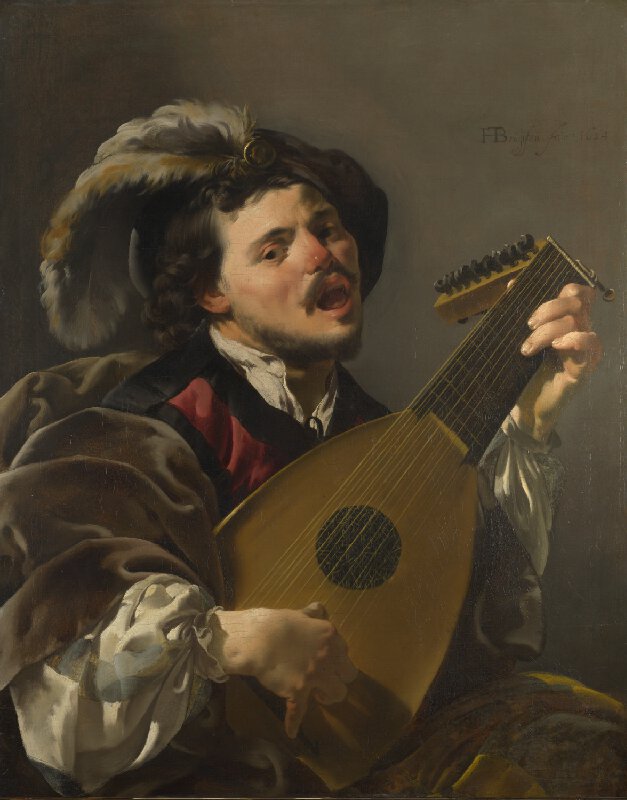FWP:
SETS == WORDPLAY
For background see S. R. Faruqi's choices. This verse is NOT one of his choices; I thought it was interesting, and have added it myself. For more on Ghalib's unpublished verses, see the discussion in {4,8x}.
'Natural poetry' fans should note that when the young Ghalib composed this verse about the hardships of old age, he was eighteen or nineteen years old. For more on this, see {66,1}.
The wordplay in this verse is delightful. For chang refers (see the definition above) to 'anything crooked or bent', such as 'a lute' (which can have a radically bent neck, as in the painting below), or 'the hand expanded with the fingers somewhat hooked' (which is close to the way the fingers would be positioned when playing the lute). The word chang can also refer to a 'Persian harp', which has its own curved shape; on this see {321x,4}. (One more chang appears in {169,10}.)
And of course, 'anything crooked or bent', including the stature of old age. Really only ḳhamīdah is used in Urdu, and ḳhamīdan'hā is awkward and unidiomatic; it feels constrained by the meter. (This is the same criticism that Zamin made of kushādan'hā in {63,3x}, and on the same grounds.) Ghalib does tend to go in for such pluralized abstractions; for more examples, see {1,2}.
For a truly brilliant use of the bent-back image, see Mir's M{17,8}.

Asi:
'Oh Asad, in these strings [of an instrument] the very same sound of ardor for the friend/beloved is present; the bentnesses of the lute are not devoid of melody.' That is, they have become bent, but in even these strings the very same ardor is steadfast.
In my view, instead of parde [Asi's text has parde instead of pīrī] there should be the word pīrī , through which the 'bentnesses of the lute' would become extremely meaningful-- although 'strings of the lute' too cannot be called incorrect.
== Asi, pp. 117-118